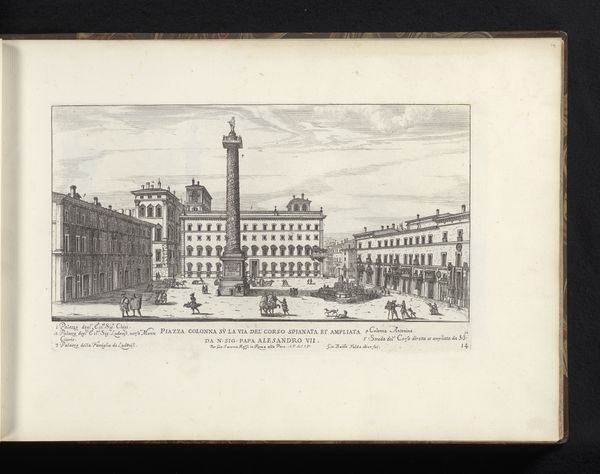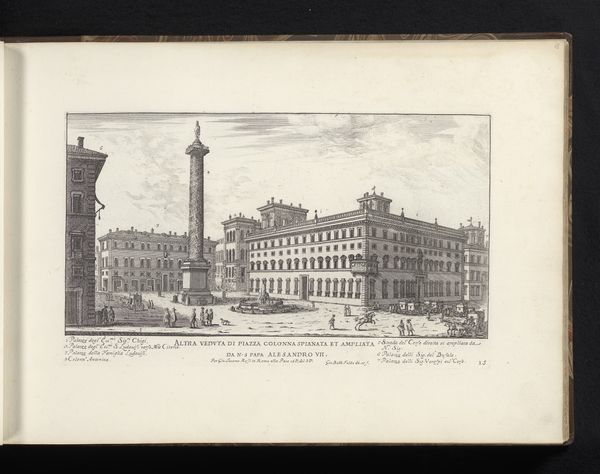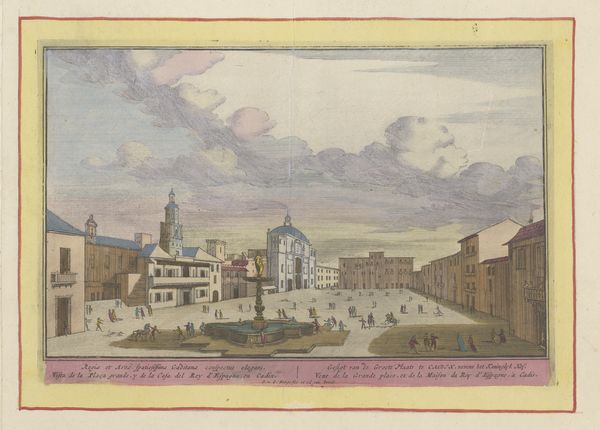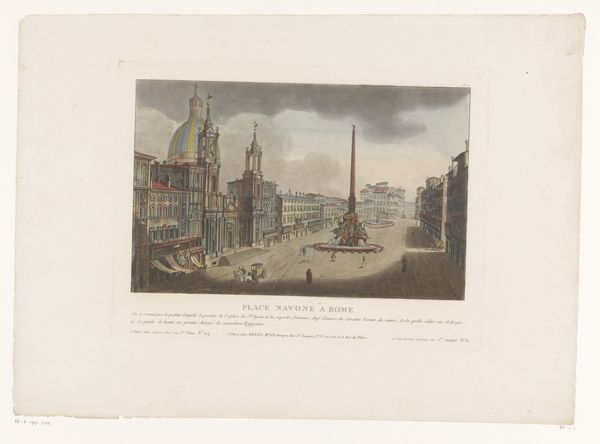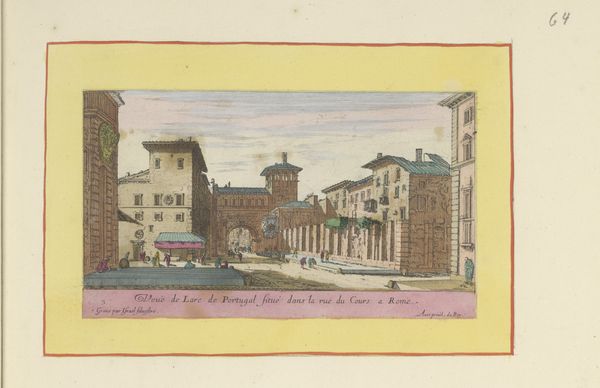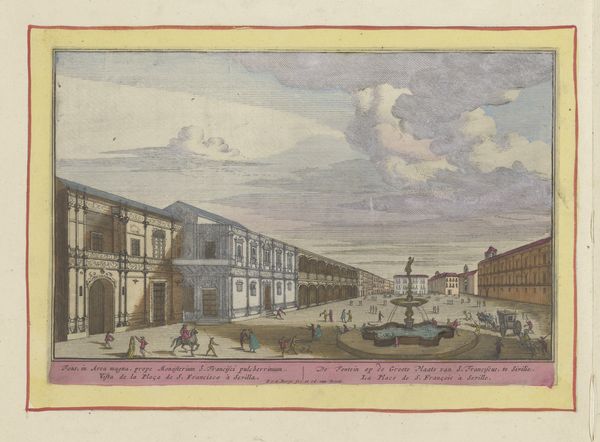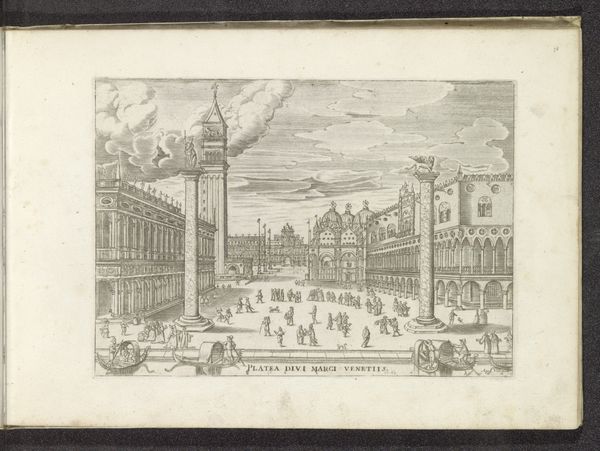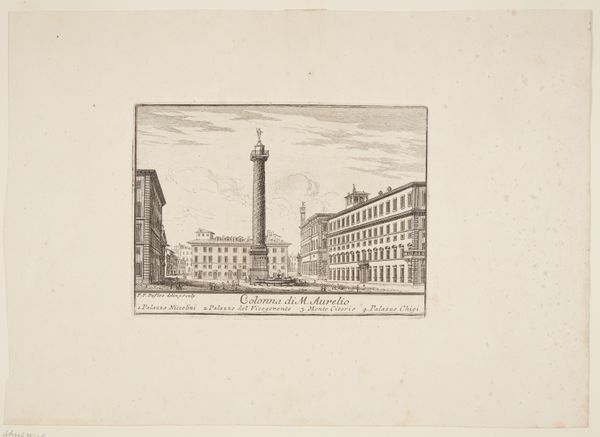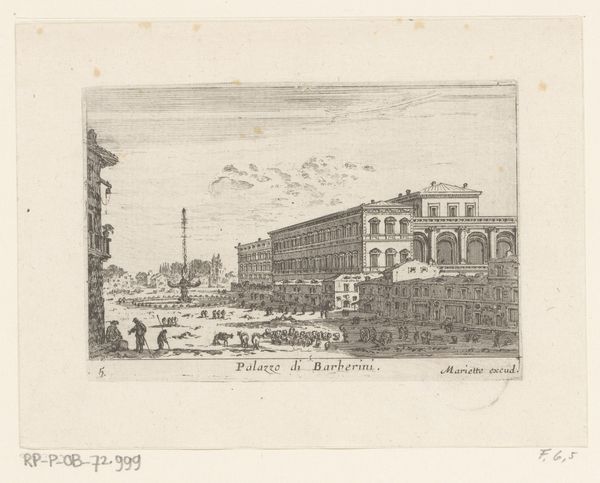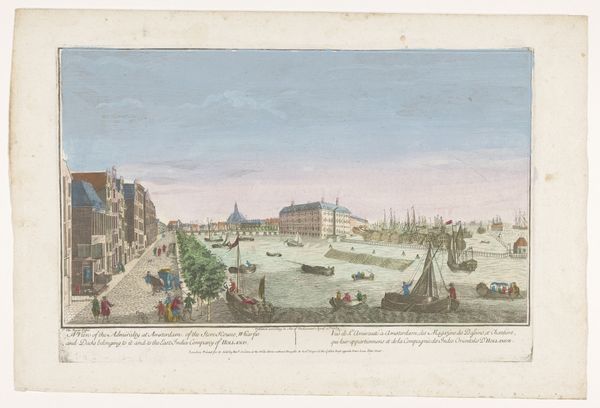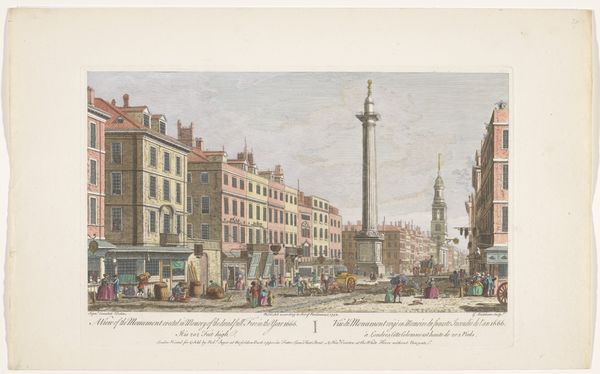
print, engraving
#
baroque
# print
#
landscape
#
column
#
cityscape
#
engraving
Dimensions: height 117 mm, width 202 mm
Copyright: Rijks Museum: Open Domain
Curator: Oh, isn’t that quaint? So many tiny, tiny people! I just love the feeling of an endless day you get from this one. It feels airy, like a Roman holiday in watercolor almost. Editor: This is "Zuil van Marcus Aurelius te Rome," or Column of Marcus Aurelius in Rome, by Israel Silvestre. Likely made sometime between 1631 and 1717, it's an engraving. I find the way Silvestre captures the bustling Roman cityscape quite fascinating, though not entirely historically accurate, mind you. Curator: Accurate or not, look at that sky! The colors make it feel more alive, don't they? The whole composition breathes with the same vivacity you imagine when thinking about old, bustling cities like Rome. What is most striking about this print to you, from a historical standpoint? Editor: I’m struck by how the image serves as both a record and a re-imagining. The column itself, of course, is a real monument with complex political and cultural significance tied to the Roman Empire, especially during that time. Yet Silvestre frames it within this very vibrant, almost staged scene of daily life in Rome. I think his work romanticizes what life was like, using that central column as a landmark and emblem. It’s fascinating to watch history through an artist’s personal vision. Curator: Yes! I find myself drawn into the artist’s particular romanticization, this slice of an artist's consciousness. It allows me, as the viewer, to reflect on my own response to that vision. And frankly, what Silvestre chose to include and exclude says quite a bit about him and his place in the world too. I wonder, what's the one detail in the engraving you find yourself most intrigued by? Editor: The tiny figures milling around the base of the column. They emphasize its sheer scale. Also, it underscores the column's presence in the lived experience of Rome; it's a public monument. And the fact that it's been reimagined into a print, to be distributed and disseminated. That adds a layer to the socio-political message being shown. It reminds us how cities build monuments for citizens, but citizens also bring a monument to life through continuous interactions. It feels more organic and humane because of it, don't you think? Curator: Absolutely! It's almost as if Silvestre wanted us to think about the dialogue between past and present, stone and flesh. I feel ready for gelato now… Editor: Quite. A fitting end, I think, to our little stroll through history and artistry, framed by an obelisk, captured in print and imagination.
Comments
No comments
Be the first to comment and join the conversation on the ultimate creative platform.
